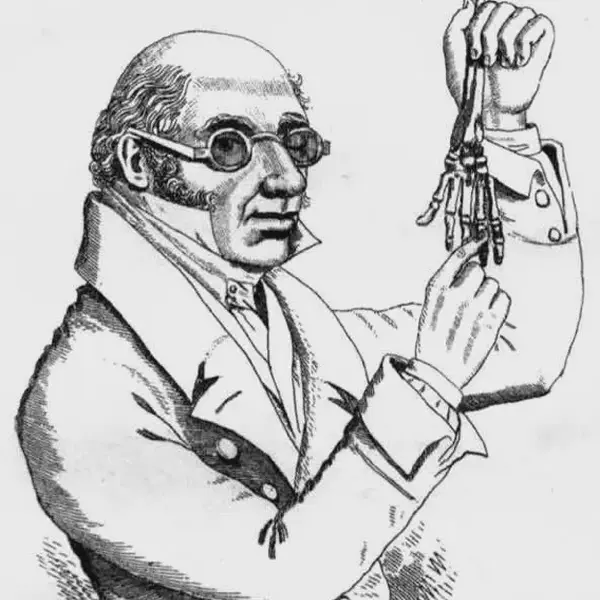
Robert Knox, Scottish Surgeon and Zoologist, Died
December 20, 1862
Robert Knox, FRSE FRCSE, born on September 4, 1791, and passing away on December 20, 1862, was a Scottish anatomist and ethnologist, whose career and reputation were significantly impacted by his involvement in the notorious Burke and Hare murders.
Born in Edinburgh, Scotland, Knox eventually partnered with anatomist and former teacher John Barclay and became a lecturer on anatomy in the city, where he introduced the theory of transcendental anatomy. However, Knox’s incautious methods of obtaining cadavers for dissection before the passage of the Anatomy Act 1832 and disagreements with professional colleagues ruined his career in Scotland. Following these developments, he moved to London, though this did not revive his career

Medical Career
Knox was a respected anatomist and lecturer in Edinburgh, a leading center for medical education in the 19th century. He was known for his expertise in anatomy and his innovative teaching methods.
Ethnology
Apart from his anatomical work, Knox was also interested in ethnology – the study of human races and cultures. His views in this field, however, were controversial, especially his support for the now-discredited theory of polygenism, which posited that different races had separate origins.
Involvement with Burke and Hare
Knox’s legacy is overshadowed by his association with the Burke and Hare murders. William Burke and William Hare were serial killers who murdered people in Edinburgh between 1827 and 1828, selling the bodies to Knox for dissection in his anatomy classes. This case exposed the dark side of anatomical research at a time when legally sourced cadavers were scarce, leading to a market for bodies obtained through nefarious means.
During the early 19th century, there was a high demand for cadavers in medical schools for anatomical study, but legal sources were scarce. This scarcity led to the rise of body snatching and, eventually, to murder as a means of obtaining bodies.
Burke and Hare were Irishmen living in Edinburgh. Hare ran a lodging house, and when one of his tenants died owing rent, he and Burke sold the body to Dr. Robert Knox, an anatomy lecturer, for dissection. Realizing the profit that could be made, they decided to procure more bodies.
Burking
Burke and Hare developed a method of killing their victims, known as “burking,” which involved plying them with alcohol and then suffocating them. This method left the body largely undamaged, making it more valuable for anatomical study.
Victims
Over the course of about a year, Burke and Hare killed at least 16 people, including men, women, and children. Their victims were typically poor or marginalized individuals, less likely to be missed or investigated thoroughly.
Discovery and Trial
The murders were discovered in November 1828. Hare turned king’s evidence, testifying against Burke in return for immunity from prosecution. Burke was convicted and executed in January 1829, and his body was publicly dissected. Hare was released and disappeared from public records.
Impact on Medical Ethics
The Burke and Hare scandal raised significant ethical questions about the sourcing of cadavers for medical research and contributed to changes in the laws governing anatomical study. The Anatomy Act of 1832, for example, was enacted to provide legal means for medical professionals to obtain bodies for research and teaching, thereby curtailing the illicit trade.
Reputation and Later Life
Knox left for London after the death of his wife (the remaining children were left with a nephew). He found it impossible to find a university post, and from then until 1856 he worked on medical journalism, gave public lectures, and wrote several books, including his most ambitious work, The Races of Men in which he argued that each race was suited to its environment and “perfect in its own way.”
Additionally, Knox wrote a book on fishing in Scotland, which became his best-selling work.
In 1854 his son Robert died of heart disease; Knox tried for a posting to the Crimea but at 63 was judged too old.
In 1856 he became the pathological anatomist to the Free Cancer Hospital, London. He joined the medical register at its inception in 1858 and practiced obstetrics in Hackney. On 27 November 1860 he was elected an Honorary Fellow of the Ethnological Society of London, where he spoke in public for the last time on 1 July 1862.
He continued working at the Cancer Hospital until shortly before his death on 20 December 1862, at 9 Lambe Terrace in Hackney. He was buried at Brookwood Cemetery near Woking, Surrey.
Knox’s reputation suffered greatly due to his association with Burke and Hare. Although he was never legally implicated in the murders, his career in Edinburgh was irreparably damaged. He continued his work in anatomy and ethnology but never regained his former prestige.
Robert Knox’s story is a reminder of the complexities surrounding the development of medical ethics and the sometimes problematic history of medical research. While he was a skilled anatomist and a significant figure in the medical community of his time, his legacy remains intertwined with the infamous Burke and Hare case.